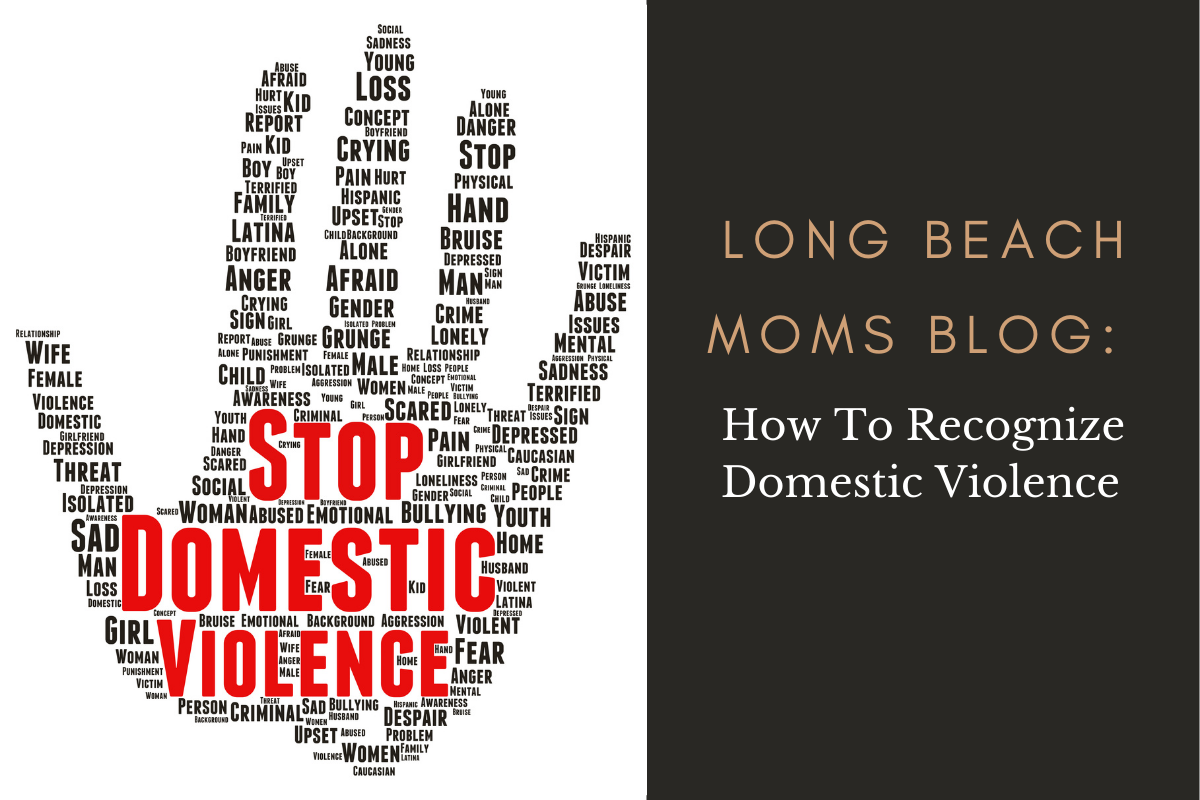Long Beach Moms Blog: How To Recognize Domestic Violence
What is Domestic Violence?
Domestic violence is a serious social and public health issue. Domestic violence is a range of behaviors used by one partner to gain or maintain power and control over another partner in an intimate relationship. It can include physical, emotional/verbal, sexual/reproductive, financial, and/or digital abuse. Anyone can be a victim or perpetrator of domestic violence regardless of race, ethnicity, gender, sexuality, age, religion, education level, or economic status. According to the CDC’s National Intimate Partner and Sexual Violence Survey, approximately 1 in 4 women and 1 in 10 men have experienced intimate partner violence, sexual violence, physical violence, and/or stalking by an intimate partner during their lifetime.
What is Power and Control?
Domestic violence is a pattern of abusive behaviors used by one partner to exert control over another. The abuser uses coercive tactics to force the victim into submission until the victim becomes completely dependent upon their abuser. Over a period of time, the abused partner develops the mindset that the outside world is scary and that there is no one that will help them. In addition, many victims choose not to disclose the abuse to their friends and family out of fear or shame, which only increases the victim’s vulnerability and overall danger. Given these dynamics, many victims do not have the strength nor the courage to seek safety, obtain protection orders, or file criminal charges against their abuser.
How to Recognize Domestic Violence
In the early stages of a new relationship, it is not always easy to tell if a partner is or will become abusive. In fact, many abusive people seem to be charming, “too good to be true” partners in the beginning. However, the controlling behaviors may emerge over time as the relationship progresses. Domestic violence can show up differently across relationships because every relationship is unique.
Common warning signs of abusive behavior in a partner include but are not limited to:
- Has a history of abusing others
- Blaming you when things go wrong and telling you that you never do anything right
- Showing extreme jealousy or anger when you are not with them
- Preventing you from spending time with friends, family members, or peers
- Insulting, demeaning, humiliating, or shaming you (especially in front of other people)
- Preventing you from making your own decisions (controlling different aspects of your life such as how you dress or who you hang out with)
- Controlling your finances, including taking your money or refusing to provide money for necessary expenses
- Pressuring you to have sex or perform sexual acts you are uncomfortable with
- Pressuring you to drink alcohol or use drugs
- Intimidating you through threatening looks or actions
- Insulting your parenting or threatening to harm or take away your children or pets
Teenage Dating Violence
The impact of domestic violence is not limited to adults, as children within the home are often subjected to mental, verbal, and physical abuse. If left untreated, many of these children grow-up to repeat the abusive behaviors that were modeled in the home. Additionally, nearly 1.5 million high school students nationwide experience physical abuse from a dating partner each year and 1 in 5 teens has experienced emotional abuse from a dating partner.
As a parent or guardian, you may ask yourself what signs you should look out for if your child is experiencing intimate partner violence. Here are some of the red flags:
- Avoiding their friends and family
- Failing grades or dropping out of school activities
- Constantly needing to check their phone or immediately needing to respond to their partner
- Sudden changes in appearances
- Withdrawn or quieter than usual
- Unexplained bruises or marks
As a parent, it can be difficult to know how to support a loved one who may be experiencing abuse. Here are some tips on how to support youth:
- Always be supportive
- Do not place the blame on them
- Keep the conversation friendly, not preachy
- Create a safety plan (loveisrespect.org)
As long as conditional support is present, your child will feel as though they can come to you for support when they are ready to receive additional information.
Remember, abuse is never okay and not the victim’s fault. Everyone deserves to have a relationship that is respectful, loving, and healthy. If you or someone you know is experiencing abuse, WomenShelter of Long Beach is here to support. Call our 24-Hour Crisis Hotline: (562) 437-4663 or visit us Monday-Friday (8am-5pm) at our Domestic Violence Resource Center: 4201 Long Beach Blvd., Ste. 102, Long Beach, CA 90807.
Sources: Centers for Disease Control and Prevention (CDC), National Domestic Violence Hotline





